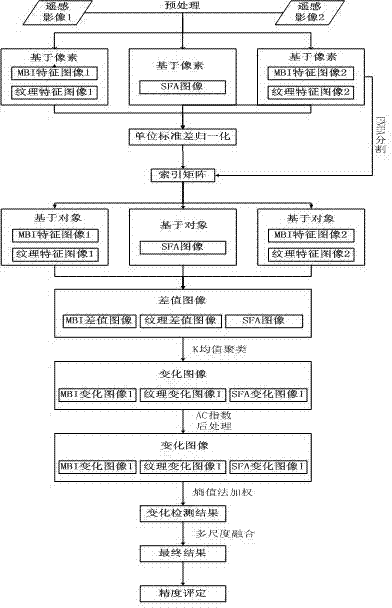Object-oriented building change detection method based on multi-feature fusion
A multi-feature fusion and object-oriented technology, applied in image analysis, instrumentation, computing, etc., can solve problems such as relying on the results of feature extraction, ignoring differences, and difficult target extraction
- Summary
- Abstract
- Description
- Claims
- Application Information
AI Technical Summary
Problems solved by technology
Method used
Image
Examples
Embodiment Construction
[0052] In order to facilitate those of ordinary skill in the art to understand and implement the present invention, the present invention will be described in further detail below in conjunction with the accompanying drawings and embodiments. It should be understood that the implementation examples described here are only used to illustrate and explain the present invention, and are not intended to limit this invention.
[0053] please see figure 1 A kind of object-oriented building change detection method based on multi-feature fusion provided by the invention comprises the following steps:
[0054] Step 1: Preprocessing two high-resolution remote sensing images A and B in different phases of the selected area, mainly including geometric correction, radiation correction, geometric registration and image cropping;
[0055] (1) Geometric correction: the geometric correction method of the present invention adopts geometric correction of remote sensing images based on polynomial...
PUM
 Login to View More
Login to View More Abstract
Description
Claims
Application Information
 Login to View More
Login to View More - R&D
- Intellectual Property
- Life Sciences
- Materials
- Tech Scout
- Unparalleled Data Quality
- Higher Quality Content
- 60% Fewer Hallucinations
Browse by: Latest US Patents, China's latest patents, Technical Efficacy Thesaurus, Application Domain, Technology Topic, Popular Technical Reports.
© 2025 PatSnap. All rights reserved.Legal|Privacy policy|Modern Slavery Act Transparency Statement|Sitemap|About US| Contact US: help@patsnap.com



